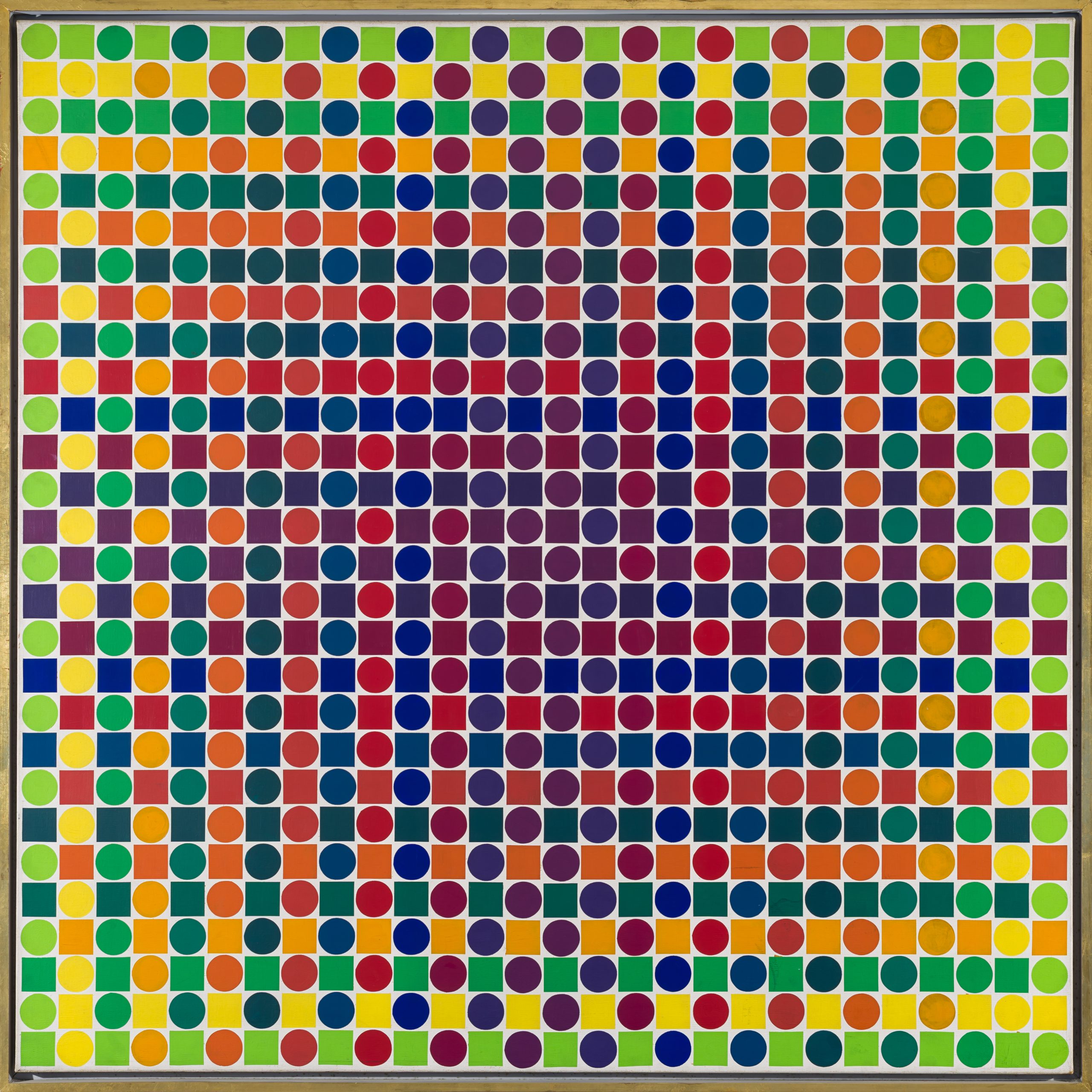Julio Le Parc (1928, Mendoza – Argentina) is considered one of the great referents of geometric art, both optical and kinetic. In his works, he uses elements that surprise or suggest the gaze, seeking to involve the viewer completely within the work. For this he resorts to artificial illuminations, specular effects, reflections and movements, created by the use of mechanical bands that move by means of hidden devices. Over the years his research led him to create works that were in perpetual transformation and constant instability, encouraging an active relationship between the viewer and the art object. Visionary, committed, irreverent, are some of the adjectives that can be used to define the work of this Argentine artist who settled in Paris in the mid-twentieth century, where he became one of the greatest emblems of contemporary art. Le Parc proposed in the sixties a break with the artistic tradition that had prevailed until then, moving away from the static work and approaching a dynamic conception of art. His kinetic works belong to the group of works by means of which he implements the use of machinery, that is to say, external contingents, with which he creates a transformation of reality. His light games modify the space, recreate it permanently and at the same time dissolve it, including us in the total work of art. On the other hand, his mobiles, developed since 1960 to date, lead him to achieve the multiple variety of situations in the same experience by means of an apparently simple work through which he manages to transform reality. The notions of movement, instability and probability appear clearly, and with them the notion of multiple and constant transformation. Julio Le Parc entered the Academia Nacional de Bellas Artes Prilidiano Pueyrredón in 1942. In 1955 he began his studies at the Ernesto de la Cárcova School of Fine Arts. In 1958 he received a scholarship from the French government and settled in Paris where he founded the G.R.A.V. (Groupe de Recherche d’Art Visuel -Visual Art Research Group-) and was a member of the group Nueva Tendencia.
In 1966 he won the International Grand Prize for Painting at the Venice Biennale. Throughout his extensive career he has received numerous distinctions, among which stand out: Legion of Honor, Knight Rank, Paris, France (2014), First Prize, 1st International Painting Biennial, Cuenca, Ecuador (1987), International Special Prize, Di Tella Institute, Buenos Aires, Argentina (1964) and together with the G.R.A.V group has received the Gold Medal, San Marino Biennial, Italy (1963) and the First Team Work, Paris Biennial, France (1963). In 2012, the Cultural Center named after him was inaugurated in Mendoza, Argentina. He has held numerous solo and group exhibitions, among which stand out: Serpentine, Sackler Gallery, London, England (2014), Le Parc Lumiere, solo show at the Museum of Latin American Art in Buenos Aires (2014) and Casa Daros, Rio de Janeiro; Soleil Froid, solo show at the Palais de Tokyo, Paris (2013), the group shows Dynamo, at the national galleries of the Grand Palais in Paris (2013) and Real-Virtual, kinetic art of the sixties, at the National Museum of Fine Arts (2012), among others. Lives and works in Paris, France..


 Le Parc Julio
Le Parc Julio